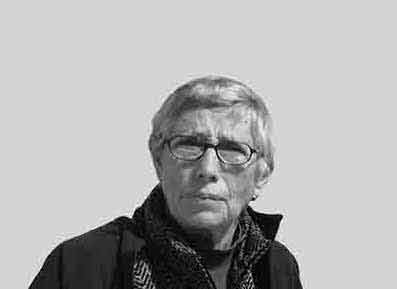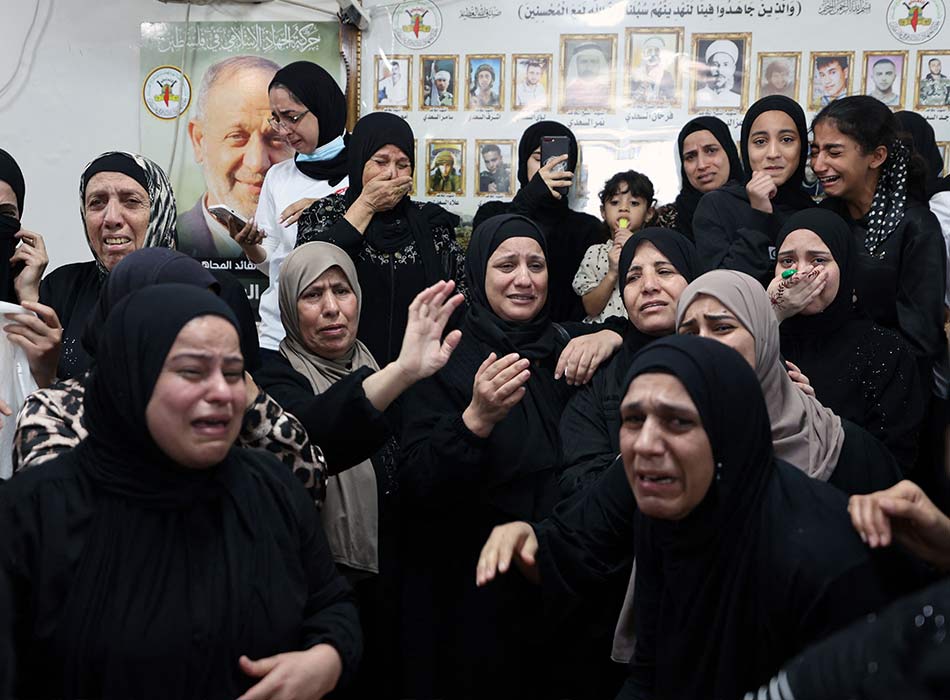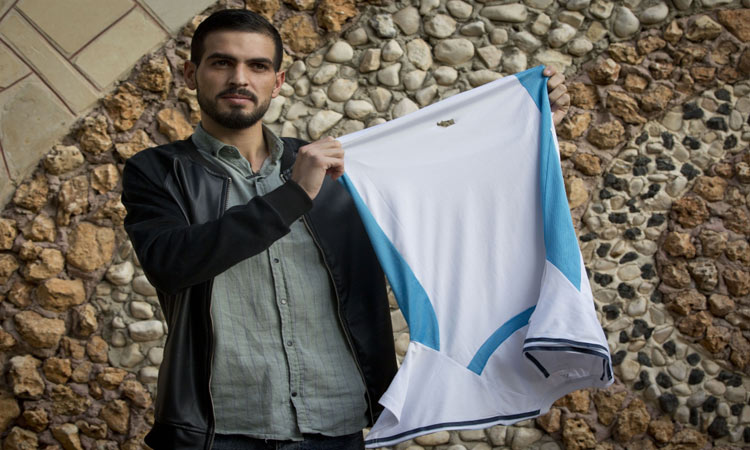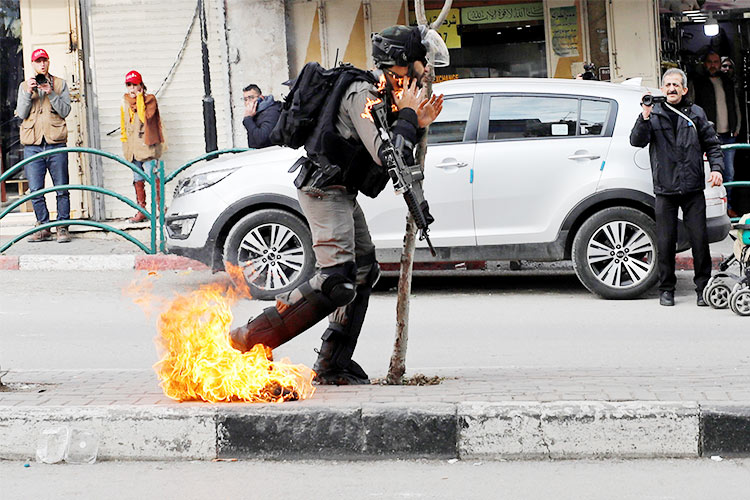Festivities commence

Michael Jansen
The author, a well-respected observer of Middle East affairs, has three books on the Arab-Israeli conflict.

Mexican pilgrims during an Advent season visit outside the Church of the Nativity in the biblical city of Bethlehem.
Visitors from every corner of the globe have already arrived and visited the 1,500-year-old Church of the Nativity built over the grotto decorated with a silver star, where tradition holds, Jesus was born. A huge Christmas tree decorated with hundreds of coloured lights looms over Manger Square in front of the church. Shops sell local handicrafts: olive wood crosses, salad implements and models of the manger scene, jewellery made of mother-of-pearl, and clothing adorned with delicate Palestinian cross-stitch embroidery patterns.
Before covid Bethlehem received more than 1 million pilgrims and tourists annually. This Christmas the town is ready to welcome 120,000, a figure approaching the 150,000 who arrived in 2019, the record year before the pandemic. While fearful of covid infection, this year’s crop of visitiors has not been deterred by violence in the West Bank and East Jerusalem during which 155 Palestians and 31 Israelis have been killed.
While the hot fronts have mainly been in the northern West Bank city of Nablus and the Jenin refugee camp and al-Khalil (Hebron), violence gripped the Bethlehem area recently after the Israeli army slew a teenager in the nearby Deheishe refugee camp. Palestinians held a one-day strike in the Bethlehem district in protest.
Foreign visitors remain either oblivious to or undeterred by Israel’s illegal nine-meter tall cement slab wall which slinks across the West Bank and encircles Bethelehem, turning the little hill town into an isolated island in the heavily occupied territory and cutting it off from Jerusalem. The nine kilometre journey between the two cities has been puncutated by checkpoints which can take Palestinians hours to navigate.
The pandemic is clearly one thing, and an intifada another. Visitors are ready to brave bullets and beatings but not covid in its multiple forms. Eager to leave vaccinations, lockdowns and face masks, many foreigners have signed up for Christmas tours which take them to Jerusalem and Nazareth as well as Bethlehem. While Israel has given permits for 800 Christians from Gaza to travel to Bethlehem, 200 applicants have been rejected. However, Palestinian citizens of Israel can and do travel to the West Bank to join in the festivities. In lean years, their presence has enabled Bethlehem — and East Jerusalem — to survive economically.
During the celebrations, there are processions by different Christian patriarchs, marching boy scout band, tours to historic sites and a carol service in nearby Beit Sahour’s fields where angels, reportedly, announced Jesus’s birth to shepherds minding their flocks of sheep. The Walled Off Hotel established by the mysterious British grafitti artist Banksy remains a site of contemporary interest to visitors with a political cast of mind. On Israel’s apartheid wall in front of the hotel Banksy has depicted a nativity scene with the couple Mary and Joseph and baby Jesus. Above them is an Israeli shell hole framed by the points of a star.
The highlight of the Western Christian Christmas week is the midnight service at the 18th century Catholic Church of St. Catherine located next to the Church of the Nativity. St. Catherine’s was built near or on top of the foundations of a medieval cloister.
This high profile event was transformed in before millennium into a political tussle between Palestinians and Israelis. Between 1995-2000, Palestinian President Yasser Arafat made a point of personifying Palestinian territorial and religious unity by attending the Christmas eve service. When in 2001 Israeli Prime Minister Ariel Sharon barred him from travelling from Ramallah to Bethlehem, Arafat’s symbol, a black-and-white chequered headscarf, was draped over his front row chair in the church. I braved the crowd crush in Manager Square and attended the service that year with friends from Jerusalem who were fortunate to have an extra hard-to-get ticket.
Ahead of Christmas 2002, Sharon’s army had invaded Palestionian enclaves in the West Bank and imprisoned Arafat in two rooms in his Ramallah compound where he fell ill until whisked away in 2004 by a Jordanian helicopter which bore him to Amman. From there he was flown to France where he died in hospital that November. His successor, President Mahmoud Abbas followed Arafat’s example and attended the mass at St. Catherine’s church until covid intervened.
While the focus of Western Christians is Dec.25, the Eastern Orthodox Christmas is elebrated solemnly in the ancient Church of the Nativity on Jan.7. This is the date observed by the Greek, Arab, Eastern European and Russian Orthodox churches. The original church on the site was originally consecrated by the Byzantine Emperor Constantine the Greatin the fourth century. This was destroyed and the survivimg basilica was constructed by the Emperor Justinian and is shared uneasily under a 19th century status agreement by the Roman Catholic and the Armenian and Greek Orthodox churches. The church was declared by UNESCO to be Palestine’s first World Heritage Site and has been refurbished under the auspices of the Palestinian Authority by Palestinian and Italian experts. The scaffolding was finally removed when work was completed in 2016, granting visitors a view of the stunning interior of the basilica.
Photo: AFP







